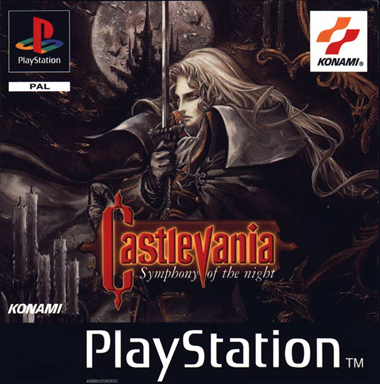Throwback Thursday: Castlevania: Symphony of the Night
Awesome Vampire, Subpar Wolf

This week I looked at Konami’s 1997 release “Castlevania: Symphony of the Night” for the original PlayStation. The game was well received at the time, earning high scores across the board in a number of magazines, and that holds true for user feedback as well. A handful of people even went as far as to tell me that it was their favorite game from the PS1 era. So let’s get to it.
“Symphony” begins with Richter Belmont’s final confrontation with Dracula in “Bloodlines.” By itself, the boss battle is difficult, although ally Maria will come to your aid should your health fall to 0, granting you invincibility for the rest of the fight. Tough though the battle may have been in “Bloodlines,” it’s little more than theatrics in “Symphony,” although it does give you a sense of power and capability early on.
Five years pass, and Dracula’s son Alucard wakes from his slumber to investigate the missing Belmont. An early confrontation with Death sees Alucard stripped of his gear, and left to scavenge new armor and weapons as he progresses through the castle. Taking a break from the left-to-right gameplay of previous “Castlevania” titles, “Symphony” plays much closer to “Metroid,” with Alucard unable to progress to certain parts of the keep until he obtains the appropriate equipment or abilities. Players at the time even referred to this installment as “Metroidvania,” and from my own limited experience with the “Metroid” series, it seems spot-on. What the game lacks in a wide variety in things needed to progress, it certainly makes up for with upgradeable equipment.
This back and forth motion through the castle can be irritating at times, but only because the game never gives you any real direction on where you need to be going. I found myself looking at the map very frequently, trying to spot a room I hadn’t yet entered, and hoping I would be able to get inside when I got to it. There is a ton of backtracking, but exploration can be its own fun, and you are given shortcuts to various parts of the keep. It’s certainly nothing I would knock a game for in 1997, but some kind of clue on where the Mist Form was would have been nice before I stumbled on it by chance.
At the game’s midpoint, you are transported to a copy of the castle you’ve spent the past few hours in, but this one is upside down. After my initial dizziness passed, I got through that portion of the game much more easily than in the original keep. Monsters are more difficult in the Inverted Castle, but that’s about it. For the most part, you already have all of the mobility and unlocks that you need to explore freely. The Inverted Castle gives you a slew of new enemy types to face off against, as well as upgraded versions of familiar ones. Each zone has new music, new bosses, and presents new challenges. I never spent a lot of time looking at the ceiling in the first castle, wondering how I would cross it as a floor later. Although it seemed bizarre at first, I quickly found myself willing to embrace it. So long as I didn’t look at the clouds for too long.
Boss difficulty varies widely. The original Alucard Doppelganger set me back for a while until I learned I could use a stopwatch during the fight and kill him while he was frozen. Many bosses had patterns which were easy to solve, but others hit so hard that it left me feeling woefully unprepared. Skill over gear, as they say. Galamoth was my favorite fight; the mechanics were entertaining, and it was nice to test survivability against the boss with the highest HP in the game. Defeating Galamoth leads you to the room with the Poison Mist form, and the game is ridiculously easy from that point on. It was so easy that I was not aware that Akmodan II in Death Wing’s Lair was a boss until I leveled up as he died.
If you have the stomach for it, I recommend the Granfalloon fight.
“Symphony’s” voice acting was delightfully awful, but it was from a time when video game voice acting was new, so I’m just grateful that they tried. Otherwise, the game’s soundtrack was the kind you would expect to hear in Dracula’s castle, the different tracks matching the task at hand, whether it’s a dark and stormy night or you find yourself sloughing through forgotten catacombs.
I see where people would call “Symphony” their favorite game of the time, but I can’t agree on a personal level. Don’t get me wrong - the game was a ton of fun - but if I’m going to name a game my last great side-scrolling platformer, it will probably be “Abe’s Exoddus.” “Symphony” had great combat, a great environment, an awesome soundtrack, lots of challenges, a story that was, well, there was a story, and admirable graphics for its day. It was money well spent for a game that took eight or nine hours (not counting time lost to deaths).
I’ll definitely come back to it eventually, but I guess I had to have been there in 1997 to feel that nostalgia. Whether you’re playing it yourself or sitting on a friend’s couch while watching them play, I do recommend checking this one out.

Castlevania: Symphony of the Night
Release: 3/19/1997 [NA]
Publisher: Konami